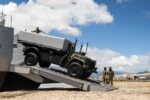The Royal Canadian Navy’s newest Halifax-class frigate, HMCS William Hall (FFH 433), has successfully concluded its participation in Operation Nanook 2025—Canada’s premier annual Arctic military exercise. The deployment underscores Ottawa’s growing emphasis on asserting sovereignty and enhancing interoperability with NATO allies in the increasingly contested High North.
Arctic Security Takes Center Stage
Operation Nanook is the cornerstone of Canada’s northern defense posture. Conducted annually since 2007, it aims to project military presence across the vast and sparsely populated Arctic region while improving joint readiness for search-and-rescue (SAR), disaster response, and sovereignty enforcement missions. The 2025 iteration involved multiple branches of the Canadian Armed Forces (CAF), including the Royal Canadian Air Force (RCAF) and Canadian Army units operating alongside international partners such as the United States Navy (USN), Royal Danish Navy (RDN), and French Navy.
This year’s exercise comes amid heightened geopolitical interest in the Arctic due to climate change-driven sea ice retreat and increased Russian military activity north of the Polar Circle. In response, Canada has prioritized bolstering its military capabilities in the region through modernization programs like NORAD renewal and investments in long-range sensors and communications infrastructure.
HMCS William Hall: A Modernized Frigate for a New Era
Commissioned in September 2023, HMCS William Hall is one of Canada’s upgraded Halifax-class multi-role patrol frigates. Designed primarily for anti-submarine warfare (ASW) but capable of executing a wide range of missions from escort duty to humanitarian assistance, the vessel features advanced sonar systems such as the Thales SQS-510 hull-mounted sonar and CANTASS towed array sonar suite. It also integrates Lockheed Martin’s CMS330 combat management system with Link 16 interoperability for real-time tactical data sharing with allied forces.
During Operation Nanook 2025, HMCS William Hall conducted surface patrols along key maritime chokepoints including Lancaster Sound and Baffin Bay—areas increasingly transited by both commercial shipping and foreign naval vessels. The ship also participated in joint ASW drills with USN P-8A Poseidon aircraft under NORAD coordination.
NATO Interoperability in Harsh Environments
A key objective of this year’s exercise was testing allied interoperability under extreme Arctic conditions. Communications latency due to geomagnetic interference remains a persistent challenge at high latitudes. To mitigate this, participating units employed low-Earth orbit satellite communications systems and HF radio redundancy protocols.
French Navy assets contributed with an offshore patrol vessel equipped with SIGINT equipment for maritime domain awareness (MDA). Meanwhile, Denmark deployed an Iver Huitfeldt-class frigate optimized for air defense operations around Greenlandic waters. These deployments reflect a broader NATO trend toward burden-sharing in Arctic deterrence missions—a shift accelerated by Finland’s accession to NATO in 2023 and Sweden’s pending membership ratification.
ISR Integration and Domain Awareness
The integration of Intelligence, Surveillance & Reconnaissance (ISR) assets played a significant role during Operation Nanook 2025. The RCAF deployed CP-140 Aurora long-range patrol aircraft equipped with synthetic aperture radar (SAR) payloads for ice reconnaissance and vessel tracking across Canada’s northern approaches.
- North Warning System: While aging radar stations continue to provide early warning coverage across the Arctic Archipelago, their limitations are well-known—prompting binational efforts under NORAD modernization initiatives to deploy Over-the-Horizon Radar (OTHR) systems by late decade.
- Drones & UAS: Small tactical UAVs launched from naval platforms like HMCS William Hall provided localized ISR feeds during boarding exercises simulating illegal fishing or unregistered vessel incursions.
Sovereignty Signaling Amid Strategic Competition
The conclusion of Operation Nanook coincides with increasing global competition over emerging sea lanes such as the Northwest Passage—claimed by Canada as internal waters but viewed by others as an international strait. Russia’s Northern Fleet continues to expand its nuclear-powered icebreaker fleet while deploying Bastion-P coastal missile batteries along its northern frontier.
In this context, Canada’s sustained presence through exercises like Nanook serves both deterrent messaging and practical capability development purposes. Defense Minister Bill Blair reaffirmed Ottawa’s commitment to “defending every inch” of Canadian territory during his visit aboard HMCS William Hall at Resolute Bay staging area earlier this month.
Looking Ahead: Capability Gaps Remain
Despite operational successes during Exercise Nanook 2025, gaps persist in Canada’s ability to sustain prolonged deployments north of latitude 70°N:
- Lack of Deep-Water Ports: The long-delayed construction at Nanisivik Naval Facility continues to hamper logistics support for RCN vessels operating beyond Baffin Island.
- Aging Icebreaking Capacity: The Coast Guard’s heavy icebreaker fleet remains limited; only one Polar-class replacement is currently under contract via Seaspan Shipyards’ National Shipbuilding Strategy portfolio—with delivery not expected before late 2030s.
- C4ISR Infrastructure: Persistent gaps exist in secure broadband connectivity across remote regions critical for command-and-control continuity during high-tempo operations.
The upcoming Defence Policy Update expected later this year may address some of these issues through targeted funding allocations tied to NORAD modernization plans announced jointly by Canada and the U.S. in mid-2024—a $38 billion package over two decades aimed at enhancing continental defense against peer threats including hypersonic missiles and cruise missile platforms launched from polar vectors.
Conclusion
The successful deployment of HMCS William Hall during Operation Nanook reflects both symbolic resolve and practical progress toward securing Canada’s northern flank amid intensifying strategic competition in the circumpolar region. As climate change accelerates access—and risk—in the High North, sustained investment in naval platforms, ISR integration, allied interoperability frameworks, and resilient infrastructure will be critical pillars underpinning Canada’s long-term Arctic security posture.








